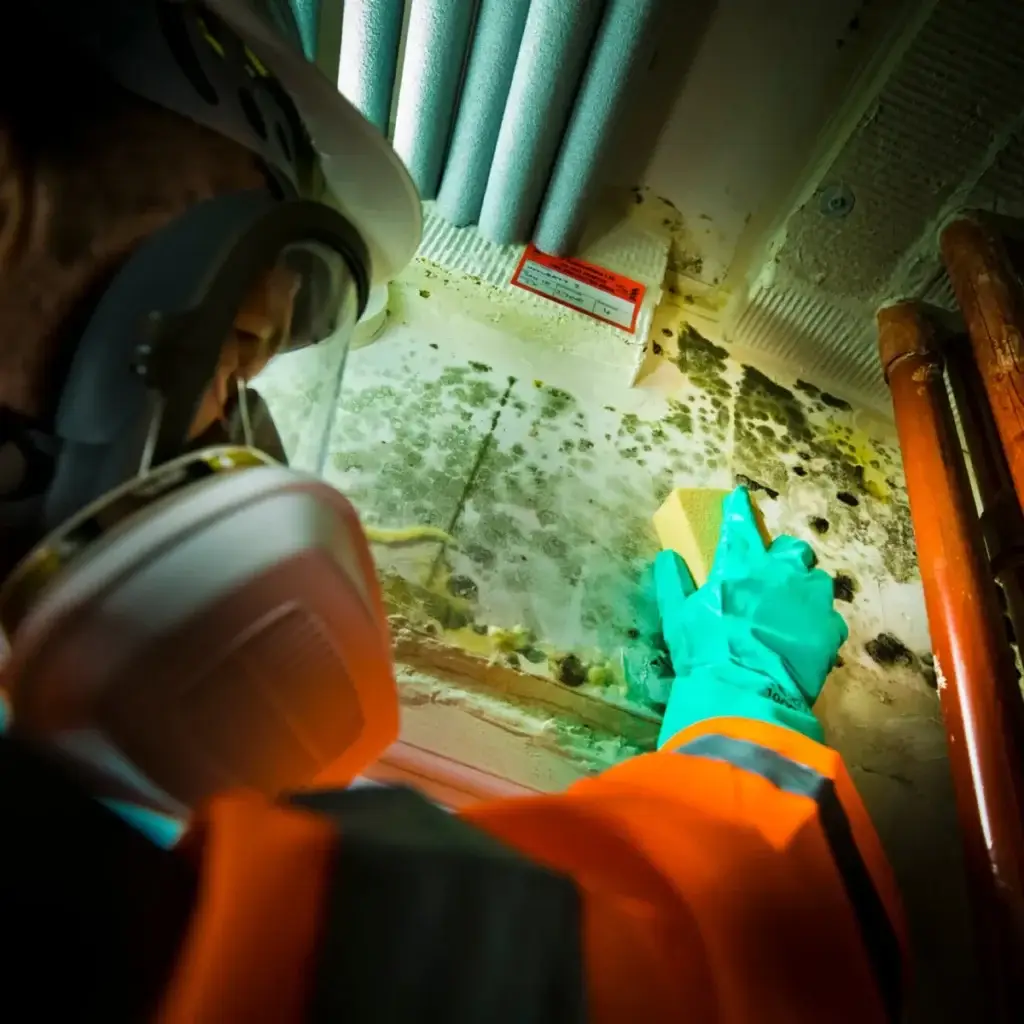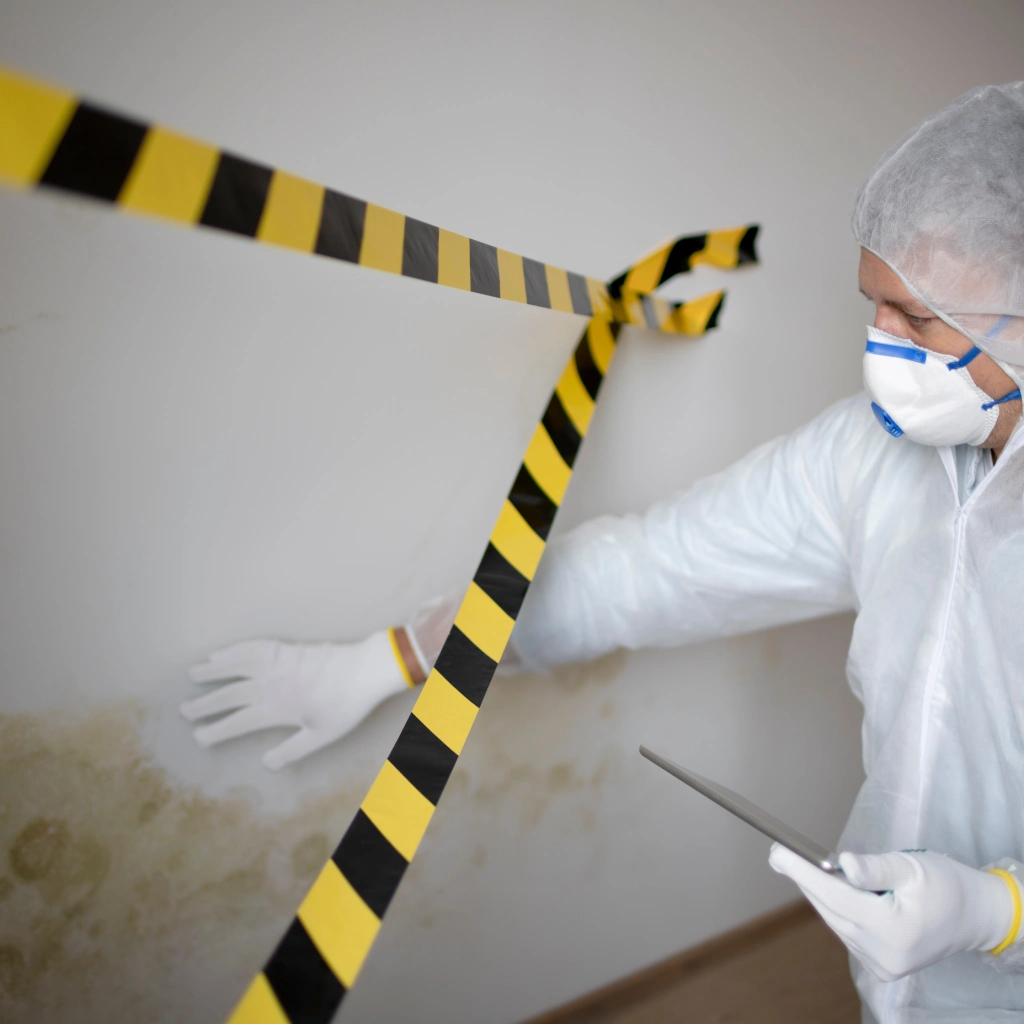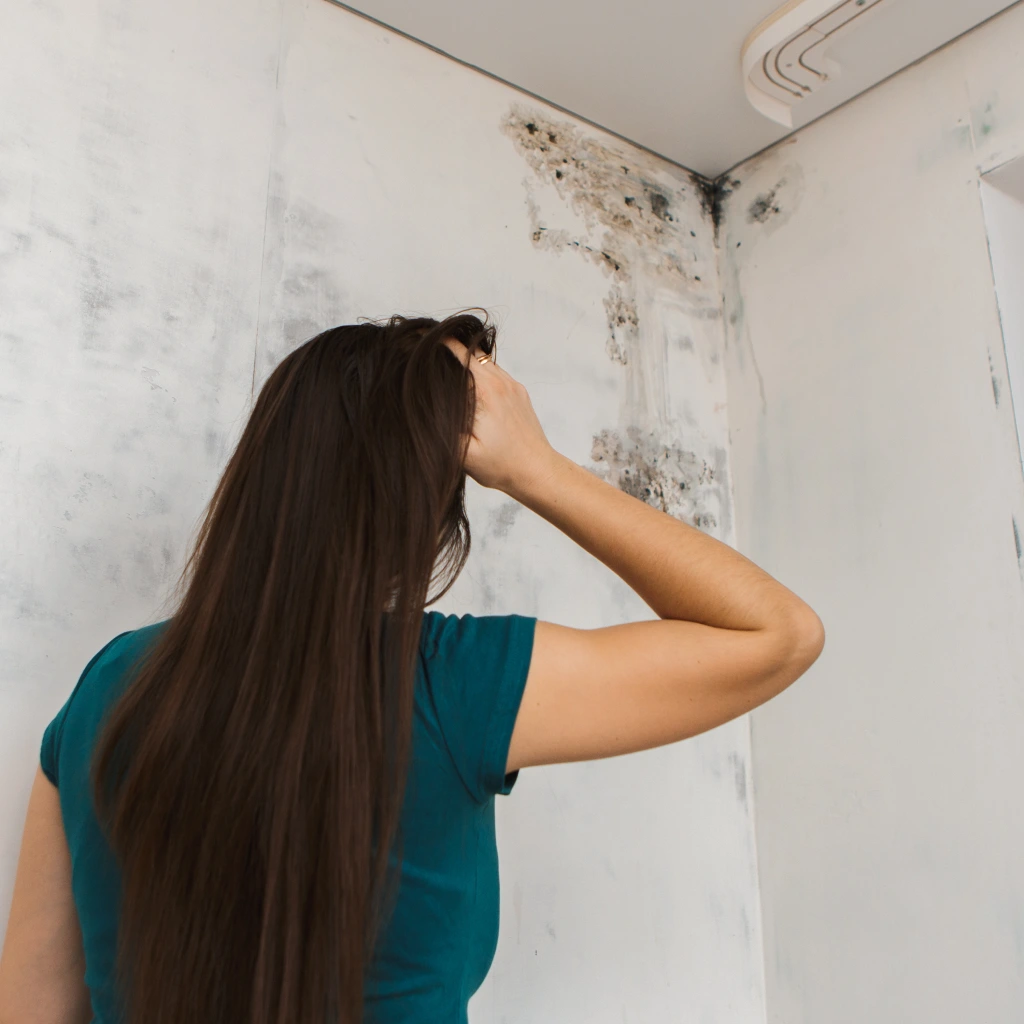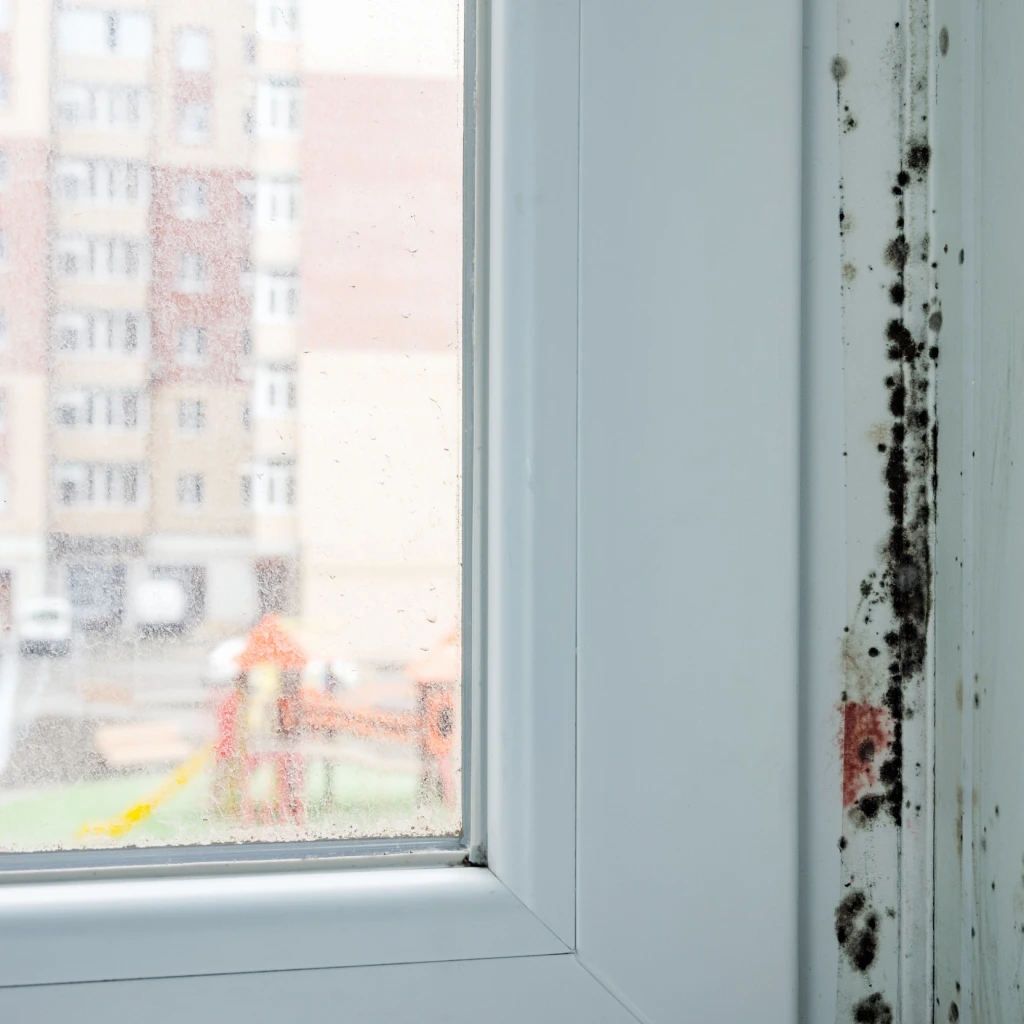- Home
- Awaab’s Law
Awaab’s Law (2025): The Guide to Damp & Mould Standards
From 27 October 2025, all social housing landlords in England must comply with Awaab’s Law. This is a landmark change in housing standards designed to protect tenants from the dangers of damp and mould.
This legislation followed the tragic death of Awaab Ishak, whose case exposed the devastating impact of poor housing conditions and inadequate responses to mould.
At Ideal Response, we help landlords, housing associations, and agents prepare for these new legal duties through expert mould surveys, damp surveys, remediation services, and compliance support across the UK.
Explore the links below for details relevant to you.
Alternatively, call us on 01622 926 505

What is Awaab’s Law?
Awaab’s Law sets legally enforceable deadlines for responding to reports of damp, mould, or emergency hazards in rented housing.
Under the October 2025 draft regulations, social landlords must:
- Investigate damp or mould within 10 working days of awareness.
- Provide written findings within 3 working days after inspection.
- Begin remedial work within 5 working days once a hazard is confirmed.
- Make safe any emergency hazard within 24 hours.
- Complete all works as soon as reasonably possible (normally within 12 weeks).
- Offer temporary accommodation if the property cannot be made safe on time.
These timeframes apply to social housing now, with private landlords expected to follow under future legislation.

Why this UK law matters
Damp and mould aren’t cosmetic issues. In fact, they are public-health hazards linked to asthma, infections, and respiratory disease.
Awaab’s Law ensures that no tenant has to live in unsafe conditions due to slow or negligent repairs. It’s not just a service, it’s a responsibility.
The risks of non-compliance
For landlords, this is more than compliance; it’s risk management. Non-compliance can mean:
- Enforcement by the Housing Ombudsman or Regulator of Social Housing
- Compensation claims for health damage
- Reputational harm and loss of tenant trust
Who needs to comply and how Ideal Response helps
Awaab’s Law introduces a shared duty across the housing sector, from those who own and manage homes to those who live in them. Everyone has a part to play in ensuring that damp and mould are identified, reported, and resolved within the new legal timeframes.
Here’s how responsibilities are defined under the October 2025 framework:
- Social landlords: Housing associations and local councils are legally bound now to investigate and act within strict deadlines.
- Letting and managing agents: They must log, escalate, and monitor reports, ensuring no complaint is lost in the process.
- Private landlords: Expected to follow the same standards as best practice ahead of future legal inclusion.
- Tenants: Have clear rights to safe, habitable homes and written communication on any reported issue.
Together, these groups form the foundation of safer, healthier housing.
How Ideal Response supports compliance
To help housing providers and property managers meet these obligations confidently, Ideal Response offers a range of professional services designed to identify, remove, and prevent damp and mould while maintaining full documentation at every stage.
1. Specialist mould & damp surveys
Our certified surveyors carry out detailed on-site investigations, which can include moisture mapping, air-quality sampling, and root-cause analysis. Each survey produces an evidence-based report that aligns with Awaab’s Law documentation standards, giving landlords and agents clear, defensible data.
2. Safe, certified remediation
When remediation is required, we remove contamination using HEPA filtration, physical containment, and professional antimicrobial treatments. Our approach safeguards both residents and building fabric, ensuring full clearance without risk of recontamination.
3. Long-term prevention
We go beyond removal by addressing underlying causes such as inadequate ventilation, insulation gaps, or plumbing faults. Our engineers provide tailored recommendations and maintenance strategies that prevent recurrence and reduce long-term costs. In addition, services like leak detection help to resolve the long-term cause quickly.
4. Documentation & compliance support
Every report, photo, and reading we produce is formatted for regulator-ready record keeping. We help housing providers maintain complete, auditable compliance packs, from the first tenant report to final verification.
For tenants
Awaab’s Law isn’t just about holding landlords accountable, it’s designed to protect tenants’ health and safety. It ensures that when you report damp or mould, your concerns must be investigated quickly, communicated clearly, and resolved properly.
About your rights
Under Awaab’s Law, you have the right to:
- A safe and healthy home: Damp and mould must be treated as health hazards, not minor issues.
- Timely investigation and repair: landlords must act within clear legal deadlines.
- Written communication: You must receive updates on findings and next steps.
- Escalation routes: If nothing changes, you can report the issue to your council or the Housing Ombudsman.
These protections ensure that no tenant should ever live with conditions that could cause harm.


For private landlords
While Awaab’s Law is currently enforceable in the social housing sector, the Renters’ Rights Bill signals that similar duties are coming to the private market. Proactive compliance now reduces risk, costs, and disputes.
How private landlords can prepare
- Log every report of damp or mould in writing.
- Arrange inspections within 10 working days.
- Keep a record of findings and communication.
- Begin remedial works promptly, usually within 5 working days if a hazard is confirmed.
- Keep evidence such as photos and invoices.
Following this workflow demonstrates professionalism and creates a defensible record in the event of disputes.
How Awaab’s Law evolved and what it changes
Awaab’s Law represents one of the most significant shifts in housing accountability in decades. Following the findings of the Awaab Ishak inquest, the government introduced mandatory response times for tackling damp, mould, and other hazards, which ensures residents are never left waiting in unsafe conditions.
A timeline of reform
- 2022 – Public inquiry into Awaab Ishak’s death exposes systemic housing failings.
- 2024 – Social Housing (Regulation) Act establishes the framework for Awaab’s Law.
- Oct 2025 – Phase 1 enforcement begins, covering damp, mould, and emergency hazards in social housing.
- 2026 / 27 – Expansion expected to private landlords and broader housing hazards.
These milestones mark a new era of responsibility for housing providers, one built on transparency, documentation, and prompt action.
Moving beyond blame
For years, mould was too often dismissed as a ‘tenant lifestyle issue’. Awaab’s Law ends that narrative. Landlords must now show they have investigated structural, ventilation, and maintenance factors before suggesting occupant behaviour is to blame.
The focus has shifted from excuses to evidence and accountability, therefore promoting collaboration between housing providers and residents.
Understanding the science of mould
Mould grows in environments with high humidity (over 60%), poor ventilation, and cold surfaces. Spores can spread throughout a property, releasing allergens and toxins that affect health and indoor air quality.
Effective remediation requires addressing the root cause of moisture. This includes fixing leaks, improving ventilation, and managing condensation and not simply cleaning visible mould.
Why choose Ideal Response?
With over 20 years of national experience, Ideal Response is a trusted expert in damp, mould, and environmental remediation. We work alongside housing associations, councils, letting agents, and private landlords to deliver practical, evidence-based solutions that meet the demands of Awaab’s Law and future housing legislation.
Our certified technicians combine technical precision with human understanding. This means every property is made safe, every process documented, and every resident treated with respect.
- 20+ years of experience: Proven success across residential, commercial, and public housing sectors.
- Rapid response: Available 24/7 to assess, contain, and remediate mould safely.
- Certified & compliant: IICRC and UKAS-aligned technicians using fully approved methodologies.
- End-to-end service: From survey and diagnostics to full remediation, drying, and prevention.
- Empathetic, expert support: Clear communication and reassurance at every stage of the process.
Why property owners nationwide recommend Ideal Response
Discover why property owners nationwide trust Ideal Response for expert leak detection, damp surveys, hoarder cleaning, mould removal, and flood or fire restoration. Our clients consistently praise our rapid response, technical precision, and compassionate service that makes recovery stress-free.
EXCELLENTTrustindex verifies that the original source of the review is Google. Excellent company I cannot praise them enough. Detected a large water leak under our kitchen floor and repaired, good reports for the Insurance company. Everyone was involved were very professional and friendly during a difficult time.Posted onTrustindex verifies that the original source of the review is Google. Steve, Dave, Danny, Renatas and Dan P were helpful, proffesional and did a good job.Posted onTrustindex verifies that the original source of the review is Google. Andreea and Petru amazing job!!Posted onTrustindex verifies that the original source of the review is Google. Excellent 👍Posted onTrustindex verifies that the original source of the review is Google. Great servicePosted onTrustindex verifies that the original source of the review is Google. I used Ideal for their leak detection service following a dispute with Thames water. I can honestly say from booking an appointment through to inspection and completion, I experienced a very professional service. Ben and Dave attended my property to carry out the inspection and subsequent works to repair. I was informed on an accurate time of arrival, and advised on each stage of the leak detection, great job by the lads I would happy recommend & use the services again. Simon South CroydonPosted onTrustindex verifies that the original source of the review is Google. Nice servicePosted onTrustindex verifies that the original source of the review is Google. I would like to thank Steve and his assistant for their understanding and the great job they have done cleaning and clearing a family member’s flat. This is a difficult time for the family and Steve’s understanding was much appreciated.Posted onTrustindex verifies that the original source of the review is Google. DON’T USE. I only gave 1 star for turning up prompt. I have a damp ceiling and asked Ideal Response to survey my roof/ceiling to locate where the water was coming in, this cost £320 plus Vat, in total £420. Mick Ideal Response surveyor said he was mystified as to where the water was coming in, even though he measured damp inside the room on the ceiling. He could not give us an answer, he only told us what we already knew about the damp marks on the ceiling. I have today had a local roofer come in free of charge and within seconds, on the roof, he found the problem to be a split in the lead flashing against the outside wall - why o why didn’t I go to this roofer first. Big question, why didn’t Mick from Ideal Response find this, Mick was on the roof a lot longer than the roofer. I think £420 inc of VAT was easy money for Ideal Response.Posted onTrustindex verifies that the original source of the review is Google. Had engineer Dave attend my home to locate water leak from the stop cock on pavement too the same in my house . Done all the tests and found it was on the Anglia water side on pavement, professional team from the office and Dave who attended. I would highly recommend thanks guys.Verified by TrustindexTrustindex verified badge is the Universal Symbol of Trust. Only the greatest companies can get the verified badge who has a review score above 4.5, based on customer reviews over the past 12 months. Read more
Awaab's Law FAQs
What is Awaab’s Law in simple terms?
Awaab’s Law is new legislation (effective October 2025) requiring social landlords to respond to damp, mould, and housing hazards within strict timeframes, protecting tenants from unsafe living conditions.
Who does Awaab’s Law apply to?
Initially, it applies to social housing landlords such as councils and housing associations. However, private landlords are expected to adopt the same standards soon as part of the Government’s wider rental reform.
How long do landlords have to fix mould under Awaab’s Law?
- Investigate within 10 working days of a complaint.
- Provide written findings within 3 working days.
- Start remedial works within 5 working days once confirmed. Emergency hazards must be made safe within 24 hours.
What happens if my landlord ignores damp or mould?
If you’re a tenant and your landlord fails to act, you can:
- Raise a formal complaint.
- Contact your local council for enforcement.
- Escalate to the Housing Ombudsman if the problem continues. Awaab’s Law gives you legal protection and a clear escalation path.
How can Ideal Response help landlords comply?
We provide professional damp and mould surveys, remediation, and documentation support aligned with Awaab’s Law. Our evidence-based reports and compliance checklists help landlords demonstrate full accountability and avoid enforcement risk.
Does Awaab’s Law apply to tenants in private rentals yet?
Not yet, but the Renters’ Rights Bill is expected to extend similar requirements to private landlords between 2026 and 2027.
What’s the best way to prove compliance?
Maintain a clear evidence trail, survey reports, photos, communication logs, and completed works documentation.
Ideal Response’s reports help you keep everything regulator-ready.
Need help ensuring compliance?
Disclaimer
This page reflects draft guidance as of October 2025. Final details may change; always check the latest Government publications.